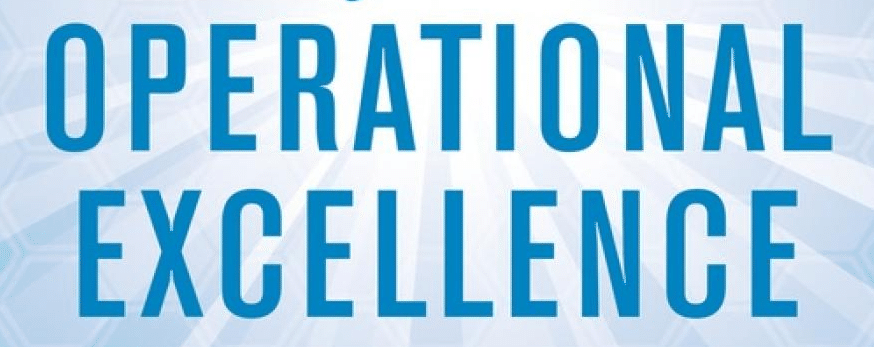What is Operational Excellence (OE)?
Operational excellence means a philosophy of leadership, teamwork, and problem solving which results in continual improvement throughout the organization by focusing on the needs of the customer, empowering employees, and optimizing existing activities in the process. Operational excellence lays its main emphasis on the need to continually improve through the promotion of a stronger teamwork atmosphere. Continuous improvement is not only biased towards improving human resource quality, but is also involved with the process and standard improvement processes. It acts as the framework and guidelines for safety and quality improvements for employees and customers, leading the way towards a business or a company becoming a better enterprise. Some of the excellence tools that we use to ensure operational excellence include: Lean Six Sigma, design, and innovation to achieve bottom-line improvement which can apply to businesses in all industries. With strategic planning and adherence to our unique excellence tools, we can guarantee that competitive edge, improvement in bottom-line, is possible and facility becomes insensitive to constantly changing market fluctuations. In today’s environment, optimizing existing activities is critical and by implementing operational excellence, sustainable results are achievable.

- Operational excellence can be pursued by a senior leadership group for example within a university that meet weekly to review administrative costs, identify opportunities for costs saving and generate ideas for working smarter across the universities.
- Operational excellence can equally be pursued by a staff work group within an institution that possesses a diversity of experience and central administration that has been formed to assist the senior leadership team function as liaison between senior leadership, faculty and staff throughout the university.
- The staff work group proposes methods for rethinking and reworking models of collaboration and consultation at the university.
- The senior leadership group and staff work group work in partnership with university faculty and staff to identify research communications and solve problems across the organization.
- Long term commitment to organizations and companies to work smarter.
- Reduces costs, enhances services and increases revenues.
- Mitigating the impact of budget reductions while at the same time reducing operational costs.
- Improving operations and processes, resulting in a more efficient, less redundant organization.
- Promotion of entrepreneurship intelligence, risk taking corporations and engagement across interactions with business and community partners.
- Freeing up money to be reinvested in the core business.
- A culture change in a way a business or organization collaborates both internally and externally.
- Identification and solving of problems.
- Unleashing of an entrepreneurship within a business or organization, by the identification of the best practices for achieving efficiencies and scaling them up where appropriate. Improvement and change of management, problem solving skills so as to be able to alter calls and direction when needed.
- Eradication of over-consulting within businesses and organizations which may become a pitfall especially where it affects speed of information.
By leveraging vast experience, it has, QSE organizes the entire implementation process for Excellence tools
Forming the Cross Functional teams and Identification of Team Leaders
Automotive certification process starts with the formation of an internal cross-functional team within the facility and select Team Leader out of the team. QSE with its vast experience can suggest methods of doing it
Define the Problem (Vital Few -Trivial Many)
List All the problems which may be hindering Operational Excellence. Place them in a Histogram under as many categories as required.
Select Problems based on a simple principle of Vital Few that is select few problems which contribute to most deficiencies within the facility
Collect Data
QSE Advises on methods to gather data for the selected Vital few issues
Cause and Effect Analysis
QSE helps organizations to come up with causes that are creating the problem and the effect that are caused by them. The details of this exercise are to be represented in the Fishbone Diagram or Ishikawa Diagram
Brainstorm for Incremental Improvement for each cause identified
QSE with its vast experiences guides and conducts brain storming sessions in the facility to identify KAIZEN (Small Incremental projects) to bring in improvements. Create a bench mark to be achieved through the suggested improvement projects
Implement the incremental improvements
QSE helps facilities to implement incremental improvements and gather data to see the results of the efforts in improvements
Assistance to Consolidate incremental achievements
Consolidate and make the major change incorporating all incremental improvements and then gather data again to see if the benchmarks have been reached
QSE educates and assists the teams on how these can be done in a scientific manner using lean and six sigma techniques
Verification
QSE organizes the verification of Data to compare results from the original data collected at the start of the projects. Verify if the suggestions incorporated are repeatable for same or better results as planned
Validation
Validate the improvement project by multiple repetitions
Celebrate Achievements
QSE provides all kinds of support in identifying the great contributors to the success of the projects and make recommendation to the Management to recognize the efforts in a manner which befits the organization to keep up the morale of the contributors.




